Events
News
 URI Geophysics professor available for expert interviews April 10, 2024 - The magnitude 4.8 earthquake centered in New Jersey last Friday was felt in Rhode Island.
URI Geophysics professor available for expert interviews April 10, 2024 - The magnitude 4.8 earthquake centered in New Jersey last Friday was felt in Rhode Island. Ambarish Karmalkar: A Model Science Communicator April 5, 2024 - Geosciences professor Ambarish Karmalkar pairs regional climate change research with science communication.
Ambarish Karmalkar: A Model Science Communicator April 5, 2024 - Geosciences professor Ambarish Karmalkar pairs regional climate change research with science communication.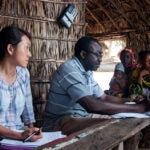 URI Professor of Environmental and Natural Resource Economics Emi Uchida named Pew Fellow March 21, 2024 - Professor Uchida is one 6 recipients recognized this year by Pew Fellows Program in Marine Conservation.
URI Professor of Environmental and Natural Resource Economics Emi Uchida named Pew Fellow March 21, 2024 - Professor Uchida is one 6 recipients recognized this year by Pew Fellows Program in Marine Conservation.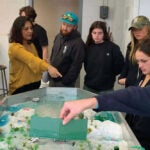 River Stories March 21, 2024 - Professor Heather Johnson’s students examine rivers through history, culture, literature, and ecology. They gain firsthand knowledge of rivers by going straight to the source.
River Stories March 21, 2024 - Professor Heather Johnson’s students examine rivers through history, culture, literature, and ecology. They gain firsthand knowledge of rivers by going straight to the source.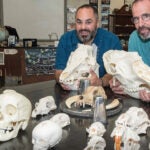 What Does Social Justice Have to Do with Evolution? Everything. March 21, 2024 - Award-winning Central Falls High School biology teacher David Upegui, Ph.D. ’21, teamed up with URI paleontologist David Fastovsky to write a book aimed at helping teachers incorporate social justice into the biology curriculum.
What Does Social Justice Have to Do with Evolution? Everything. March 21, 2024 - Award-winning Central Falls High School biology teacher David Upegui, Ph.D. ’21, teamed up with URI paleontologist David Fastovsky to write a book aimed at helping teachers incorporate social justice into the biology curriculum.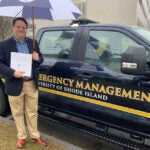 University’s first hazard mitigation plan approved by FEMA, state March 14, 2024 - URI is the first university in R.I. to have plan endorsed by federal and state agencies.
University’s first hazard mitigation plan approved by FEMA, state March 14, 2024 - URI is the first university in R.I. to have plan endorsed by federal and state agencies.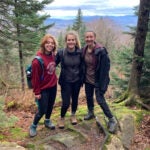 Adventurous URI: Outing Club gets students off campus, outdoors February 26, 2024 - One of the oldest clubs on campus has provided mental and physical health benefits through the pandemic, and beyond.
Adventurous URI: Outing Club gets students off campus, outdoors February 26, 2024 - One of the oldest clubs on campus has provided mental and physical health benefits through the pandemic, and beyond. URI researchers develop plan for Global Center focused on Blue Climate Solutions February 26, 2024 - URI Professor Emi Uchida, Ph.D., is leading a new NSF grant to bridge international expertise and communities around mangrove/seagrass ecosystems.
URI researchers develop plan for Global Center focused on Blue Climate Solutions February 26, 2024 - URI Professor Emi Uchida, Ph.D., is leading a new NSF grant to bridge international expertise and communities around mangrove/seagrass ecosystems.
